Peter Dornauf – 4 November, 2010
There's nothing better than seeing an art gallery, on its exterior, declaring visually what it's about. There are few modern examples of such practice but the Pompidou comes to mind among others. With an economy of means, the Wallace Gallery has managed to capture a declaration of purpose on its façade in the judiciously coloured abstract patterns painted on its exterior walls. Full marks to the designer.
For a small country where the arts are well down the list, (witness the fact of no national gallery) unless of course it’s the Hobbit and then it’s marching in the streets, New Zealand has its fair share of art benefactors. Britain has its Saatchi but Aotearoa can boast several substantial art patrons who front with the money and have, over time, built up considerable collections of contemporary New Zealand art which contributes exponentially to the health of the cultural fabric of this country. There is the Chartwell, the Barrs, Jenny Gibbs and Fiona Campbell’s travelling Real Art Road Show among the most well known, providing yet another example of a small nation punching above its weight.
James Wallace is another generous champion that can be added to the list. Since the mid sixties he’s been regarded by many as art philanthropist extraordinaire, buying and building a sizeable collection of paintings and sculpture as well as sponsoring successive art awards.
Now he’s provided funding to display these collections, making them much more accessible to the public. In August there was the opening of the TSB Bank Wallace Arts Centre (Pah Homestead) in Hillsborough and more latterly the opening of the Wallace Gallery in Morrinsville. Fortunately for the Waikato, evangelical Wallace wasn’t put off by an initial cool reception from some of the locals and a converted post office building for the purpose has scrubbed up rather well.
There’s nothing better than seeing an art gallery, on its exterior, declaring visually what it’s about. There are few modern examples of such practice but the Pompidou comes to mind among others. With an economy of means, the Wallace Gallery has managed to capture a declaration of purpose on its façade in the judiciously coloured abstract patterns painted on its exterior walls. Full marks to the designer. Personally I would have gone further and plastered over the seventies split-stone facia work. Too dated and too much of a cosy fireside look, but this is a quibble.
Inside is spacious and high-rooved, enough room to hang significantly large pieces (the McLeod diptych sits comfortably in the space). Evidence of recycling is seen in the doors and gallery seating - panel heaters from the old building have been reconstituted and put to good use. Ethically sound though some may wince at the aesthetics.
The only real down side in the reconstructed space is the large wall-size window at the rear of the gallery that looks out onto a kind of ersatz courtyard with stones and dribbling water. It’s a distracting feature that should be boarded over to provide even more hanging space and eliminate the need for intrusive wings along the interior walls that cramp some of the larger works.
The first exhibition (they are to be changed every two months) is a deliberate eclectic mix, offering a wide cross section that covers everything from an early Ian Scott to the more recent in Richard Kearney’s sculpture, Terra Incognita, selected from a base of five thousand works. The thirty two works in this show (six sculptures) demonstrate a range of styles from expressionism to the postmodern.
Of particular note is Gavin Hurley’s Mountain Boy, 2001, which quotes Rita Angus’s hard edged clarity, depicting a buttoned-up nineteenth century figure, all pious and strict stoic stare, set off against a schematized mountain whose top is smothered in snow like some dollop of sauce poured over a pudding - a wry comment on early colonialism while at the same time playing ironically with the nationalist debate.
Something of the same could be said of Michael Parekowhai’s dual photographs, You’re My Best Friend (I and 2) 2000, which portrays images of the Lone Ranger and sidekick Tonto, plastic model toys, complete with character outfits, blown up to life-size proportions. Yet another riff on the Ten Guitars theme.
Heather Straka has a similar focus with her replica paint job of Sydney Parkinson’s famous work, The Head of a New Zealander. Straka has meticulously copied this early work (1770) with one small but telling addition; a dangling tag with the word ‘Expatriate’ written across it.
Pop art, abstraction and the expressionists are all represented here. Scott’s Sky Steps, 1969, captures the optimism of the sixties with his long legged go-go girls leaping across a McCahonesque landscape, Robert McLeod does a Scottish Jackson Pollock with his dripping triptych called Hotwall, while Eion Stevens engages the quirky and comic juxtaposition of the abstract and figurative in Memo, 1999.
All of these and others provide a smorgasbord of works without any obvious unifying thread, giving the people of Morrinsville and further afield an initial taste while looking forward to subsequent shows where a more calculated curatorial hand will be employed under the guidance of the director, Charlotte Giblin.
It is a brave, even a bold move to bring such a collection of art to the provinces, but the reception, by all accounts, has been positive; a boon for the Waikato.
Peter Dornauf
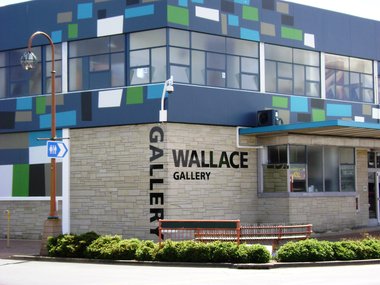
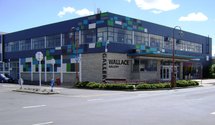
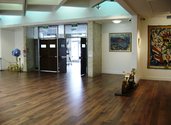
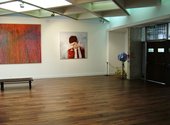
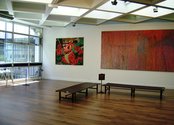
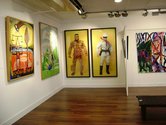
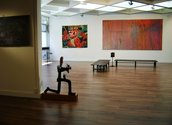

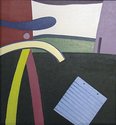



 Advertising in this column
Advertising in this column Two Rooms presents a program of residencies and projects
Two Rooms presents a program of residencies and projects
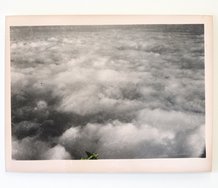
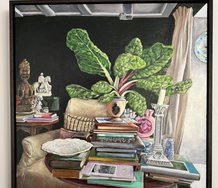
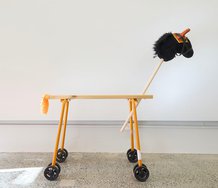
This Discussion has 0 comments.
Comment
Participate
Register to Participate.
Sign in
Sign in to an existing account.